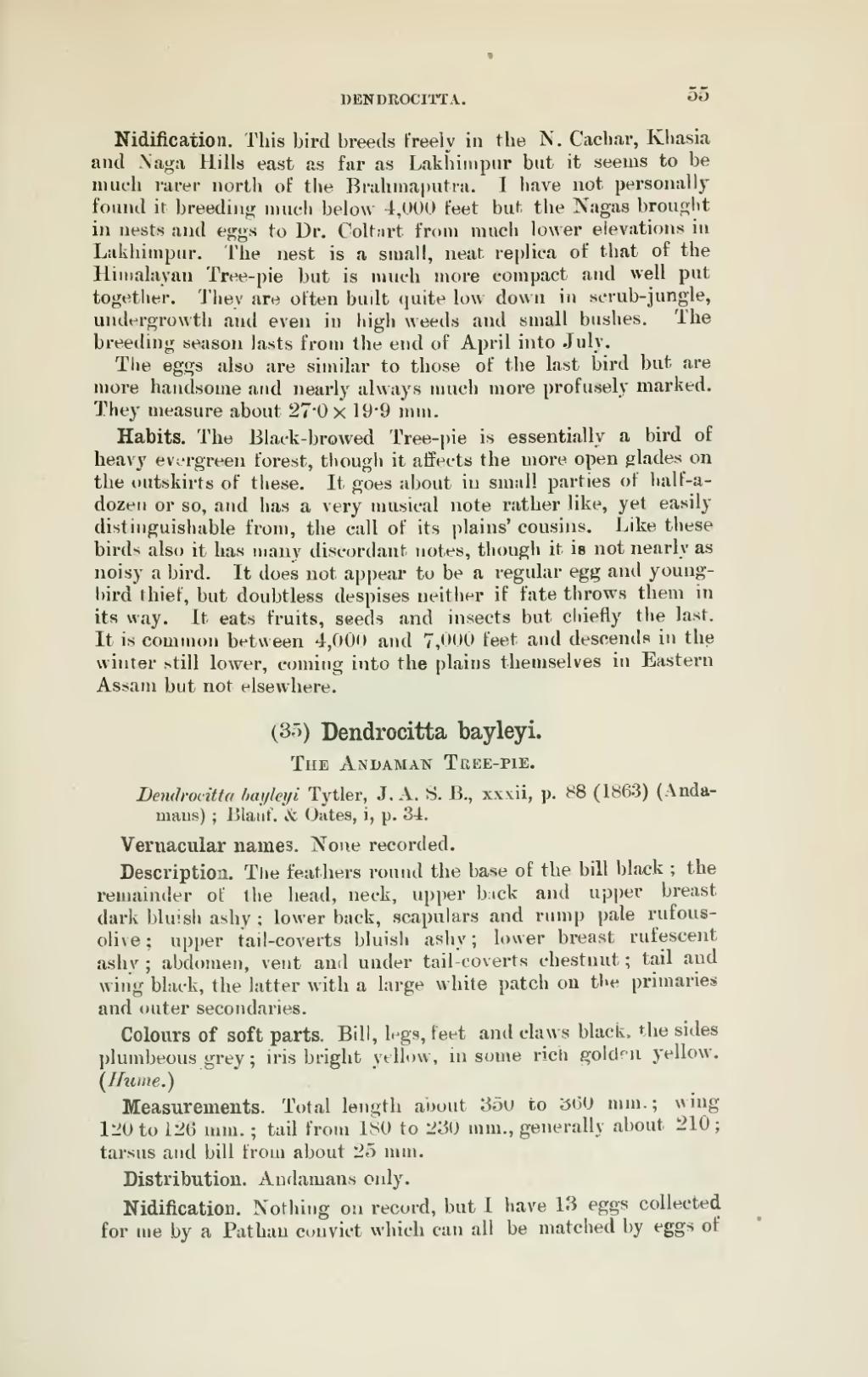Nidification. This bird breeds freely in the N. Cachar, Khasia and Naga Hills east as far as Lakbimpur but it seems to be much rarer north of the Brahmaputra. I have not personally found it breeding much below 4,000 feet but the Nagas brought in nests and eggs to Dr. Coltart from much lower elevations in Lakhimpur. The nest is a small, neat replica of that of the Himalayan Tree-pie but is much more compact and well put together. They are often built quite low down in scrub-jungle, undergrowth and even in high weeds and small bushes. The breeding season lasts from the end of April into July.
The eggs also are similar to those of the last bird but are more handsome and nearly always much more profusely marked. They measure about 27·0 x 19·9 mm.
Habits. The Black-browed Tree-pie is essentially a bird of heavy evergreen forest, though it affects the more open glades on the outskirts of these. It goes about in small parties of half-a-dozen or so, and has a very musical note rather like, yet easily distinguishable from, the call of its plains' cousins. Like these birds also it has many discordant notes, though it is not nearly as noisy a bird. It does not appear to be a regular egg and young-bird thief, but doubtless despises neither if fate throws them in its way. It eats fruits, seeds and insects but chiefly the last. It is common between 4,000 and 7,000 feet and descends in the winter still lower, coming into the plains themselves in Eastern Assam but not elsewhere.
(35) Dendrocitta bayleyi.
The Andaman Tree-pie.
- Dendrocitta bayleli Tytler, J. A. S. B., xxxii, p. 88 (1863) (Andamans); Blanf. & Oates, i, p. 34.
Vernacular names. None recorded.
Description. The feathers round the base of the bill black; the remainder of the head, neck, upper buck and upper breast dark bluish ashy; lower back, scapulars and rump pale rufous-olive; upper tail-coverts bluish ashy; lower breast rufescent ashy; abdomen, vent and under tail-coverts chestnut; tail and wing black, the latter with a large white patch on the primaries and outer secondaries.
Colours of soft parts. Bill, legs, feet and claws black, the sides plumbeous grey; iris bright yellow, in some rich golden yellow. (Hume.)
Measurements. Total length about 350 to 360 mm.; wing 120 to 126 mm.; tail from 180 to 230 mm., generally about 210; tarsus and bill from about 25 mm.
Distribution. Andamans only.
Nidification. Nothing on record, but I have 13 eggs collected for me by a Pathan convict which can all be matched by eggs of
